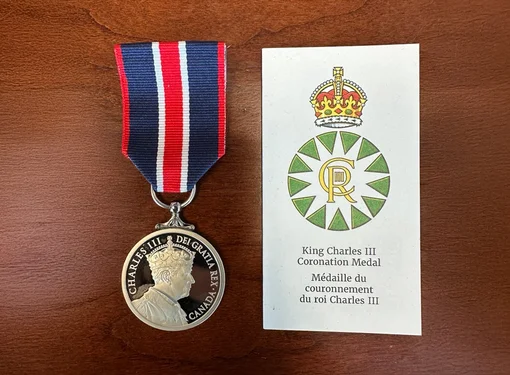How does language shape how we think about disability?
Language shapes the way we think. For example, if we talk about disability in a negative way, it causes us to also think of it negatively.
However, there is a complex value system among the disability community, resulting in different ways to talk about disability culture and life.
While some people think careful wording relates to political correctness, it has more to do with using language to change how the general public thinks of disability and shape how people with disabilities present themselves – and hopefully lead to a change in how people with disabilities are treated.
Here, we will explore some ways in which disability is described, as well as the reasoning behind these descriptions.
"John suffers from cerebral palsy."
"John is inflicted with cerebral palsy."
"John is physically challenged."
These terms immediately suggest that the person with the condition has a poor quality of life.
While having a disability may have an impact on one's well-being, many people have still managed to live productive and fulfilling lives. Some have even turned their situations into a positive, such as Rick Hansen, Christopher Reeve, Temple Grandin, and more.
With this in mind, it makes little sense to automatically generalize all people with disabilities as "suffering."
Instead, saying something simple like "John has cerebral palsy" or "John uses a wheelchair" would be a drastic improvement. It treats the person's condition as-is, without any judgment or assumptions about quality of life.
"John is confined to a wheelchair."
People who use wheelchairs are not always sitting in them. They can go swimming or sit in couches, and some can even walk to a degree. "Confined to a wheelchair" gives the image of imprisonment – ironic considering that wheelchairs can actually be a liberating tool that lets people get around even without full use of their legs.
"He is a disabled person" vs. "He is a person with a disability."
This is one of the most debated areas of disability language, particularly between North Americans and Europeans.
"Disabled person" is sometimes seen as putting the disability first, and describing the person according to it. However, proponents point out that "disabled" is a description of society and its treatment of disability; in other words, one is "disabled" by society's problems with access, inclusion, and so forth.
This is often related to the social model of disability, emphasizing the experience of disability rather than the condition itself. This idea is most prevalent in Europe, especially in the United Kingdom.
In North America, "person with a disability" prevails because of person-first language, which tries to put the person at the forefront above everything else; in other words, the person is not defined by his/her disability. It has a smaller emphasis on society's role in the experience of having a disability.
"He is brave" or "He is special" or "He is so inspirational"
This should only be used if there is legitimately something special about the person. However, it should not be used if the person is living a relatively normal life.
For example, calling someone in a wheelchair "brave" or "inspirational" for going grocery shopping suggests that people in wheelchairs are not expected to be able to go shopping independently. This is not only patronizing but also demeaning.
On the other hand, it is understandable to call Rick Hansen "inspirational" for wheeling across the world, because most people do not do things like that. He "inspires" people through his unusual feat.
However, there is a complex value system among the disability community, resulting in different ways to talk about disability culture and life.
While some people think careful wording relates to political correctness, it has more to do with using language to change how the general public thinks of disability and shape how people with disabilities present themselves – and hopefully lead to a change in how people with disabilities are treated.
Here, we will explore some ways in which disability is described, as well as the reasoning behind these descriptions.
"Suffers from," "inflicted with," "challenged"
Examples:
"John suffers from cerebral palsy."
"John is inflicted with cerebral palsy."
"John is physically challenged."
Impact:
These terms immediately suggest that the person with the condition has a poor quality of life.
While having a disability may have an impact on one's well-being, many people have still managed to live productive and fulfilling lives. Some have even turned their situations into a positive, such as Rick Hansen, Christopher Reeve, Temple Grandin, and more.
With this in mind, it makes little sense to automatically generalize all people with disabilities as "suffering."
Instead, saying something simple like "John has cerebral palsy" or "John uses a wheelchair" would be a drastic improvement. It treats the person's condition as-is, without any judgment or assumptions about quality of life.
"Confined to a wheelchair"
Example:
"John is confined to a wheelchair."
Impact:
People who use wheelchairs are not always sitting in them. They can go swimming or sit in couches, and some can even walk to a degree. "Confined to a wheelchair" gives the image of imprisonment – ironic considering that wheelchairs can actually be a liberating tool that lets people get around even without full use of their legs.
"Disabled person" vs. "person with a disability"
Example:
"He is a disabled person" vs. "He is a person with a disability."
Impact:
This is one of the most debated areas of disability language, particularly between North Americans and Europeans.
"Disabled person" is sometimes seen as putting the disability first, and describing the person according to it. However, proponents point out that "disabled" is a description of society and its treatment of disability; in other words, one is "disabled" by society's problems with access, inclusion, and so forth.
This is often related to the social model of disability, emphasizing the experience of disability rather than the condition itself. This idea is most prevalent in Europe, especially in the United Kingdom.
In North America, "person with a disability" prevails because of person-first language, which tries to put the person at the forefront above everything else; in other words, the person is not defined by his/her disability. It has a smaller emphasis on society's role in the experience of having a disability.
"Brave," "special" or "inspirational"
Example:
"He is brave" or "He is special" or "He is so inspirational"
Impact:
This should only be used if there is legitimately something special about the person. However, it should not be used if the person is living a relatively normal life.
For example, calling someone in a wheelchair "brave" or "inspirational" for going grocery shopping suggests that people in wheelchairs are not expected to be able to go shopping independently. This is not only patronizing but also demeaning.
On the other hand, it is understandable to call Rick Hansen "inspirational" for wheeling across the world, because most people do not do things like that. He "inspires" people through his unusual feat.






